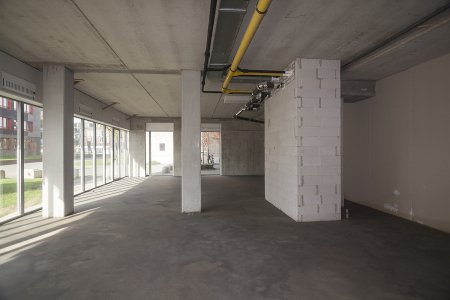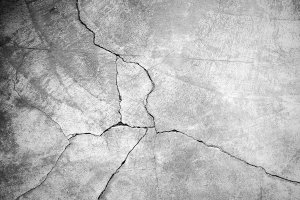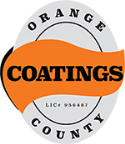-
Tips for Choosing a Concrete Sealer
During your concrete restoration project , you will have a variety of concrete sealers to choose from. With a multitude of concrete sealers available, it may be daunting to choose the right sealer for your concrete surface. Some sealers are suitable for outdoor use, while others are best used for indoor applications. When you are choosing a sealer for outdoor use, it is important to select a product that is UV resistant and that will stand up to the test of time. A company offering garage floor coating in Orange County can help you chose the right sealer or epoxy floor coating for your concrete. By sealing your concrete garage with an epoxy coating, you will enhance its durability and appearance. For an overview of some great tips for choosing a concrete sealer, be sure to check out this video from ConcreteNetwork.
-
A Look at Three Types of Epoxy Coatings
If you are seeking a durable and versatile solution for your garage floor, you may want to choose a garage floor coating installation . When you treat your concrete floors with garage floor epoxy, you will create a strong and waterproof surface that also offers slip resistance. During the planning stages of your epoxy coating installation, you will need to choose what type of coating will best suit your needs. A highly rated coating contractor in Orange County can provide you with all of the information you need about the different types of garage floor coatings. Read on for more information about three popular epoxy coating options.
Solvent Borne Epoxy
Solvent borne epoxy was one of the first floor coatings ever created. This type of epoxy coating relies on a mixture of epoxy and solvent. The solvent thins down the epoxy so that it can be easily applied to the surface of the concrete. As the solvent dries, it evaporates, leaving only the epoxy behind. Solvent borne epoxy coatings are very cohesive, and can be applied in a very thin layer across the surface of the concrete.
Waterborne Epoxy
Like solvent borne epoxy, waterborne epoxy consists of a mixture of epoxy and a liquid solution. However, this type of epoxy coating uses water as its main ingredient. Waterborne epoxy coatings are nontoxic, and are therefore safe to use in enclosed areas. In addition, waterborne coatings can be cleaned up with water based materials. Typically, this type of epoxy coating is used only on concrete.
 Solids Epoxy
Solids Epoxy A solids epoxy is very different from its solvent borne or waterborne counterparts. This type of epoxy does not have a liquid solution to carry the instead. Instead, the coating is made up of a 100% epoxy mixture. This type of coating is highly viscous, so it must be applied in thicker layers. Your epoxy coating technician can help you choose the right coating style for your specific application.
-
Touring Your Concrete Restoration Options
Whether you have a concrete garage, deck, or other concrete surface, your concrete will eventually begin to age and wear over time. If you have noticed that your concrete is cracking or fading, it may be time for a concrete restoration project. When you work with an Orange County epoxy coating company , you will have many restoration options to choose from. For example, you can clean and seal your concrete floors with an epoxy floor coating. You can also choose concrete repair services, which will remove any cracks or chips from the surface of your concrete. In addition, you can also restore your concrete with overlayment or overlay stamping. To enhance the appearance of your aging concrete, you may also want to choose from the epoxy coating colors and decorative finishes that are available to you. After your restoration project is complete, you are sure to be thrilled with the beautiful new appearance of your concrete.

-
What Are the Steps of Applying a Garage Floor Coating?
A garage floor coating will enhance the safety, durability, and beauty of your garage. By scheduling an epoxy garage floor coating installation for your garage, you will completely transform your space. If you are considering a garage floor coating for your home, you may be wondering about how the installation process works. An expert coating contractor serving Orange County will provide you with top quality service, throughout each phase of the installation process. With an expert garage floor coating installation, you will be able to get the best use out of your garage. Read on to learn more about the steps of applying a coating to a garage floor.
Clean the Concrete
Before a garage floor coating can be applied, the surface of the concrete must be completely clean and free of any dirt or debris. During the first phase of a garage coating installation, a technician will thoroughly clean your garage floors with a power scrubbing system. A clean concrete surface will ensure that the coating is able to adhere to the garage floor.
Fill Any Cracks

Occasionally, a concrete garage floor will have small cracks or areas of damage. Before the coating is applied, the technician must also make sure that all of these cracks are completely filled. To fill the cracks, the technician can use an epoxy paste. Once the paste is applied, it is scraped down so that the entire surface of the floor is level.
Lay Down the Coating
Once the garage floor has been cleaned and filled, it will be time to lay down the coating. Typically, epoxy floor coatings are applied in three layers. First, a primer is applied and left to dry. Next, a base coat and top coat are applied to the primer surface. Once these layers have dried, you will be able to start using your newly coated garage floor.
-
Review us on our Google+ page.
Has our Garage Rehab helped repair your garage? Share your positve customer experience with everyone on our Google+ page .

RECENT POSTS
categories
- Uncategorized
- epoxy garage floor paint
- Customer Review
- concrete sealer
- concrete restoration
- Garage Floor Epoxy Coating
- Garage Floor Coating
- Concrete Repair
- Floor Coating
- Infographic
- garage storage
- Deck Coating
- Epoxy Coating Services
- Epoxy Coating Contractor
- Deck Waterproofing
- Epoxy Floors
- Methane Gas Barrier
